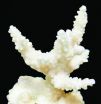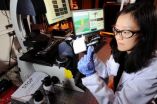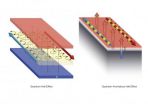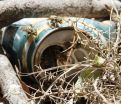(Press-News.org) URBANA – In evaluating the bioactive compounds of Illinois blueberry and blackberry wines, University of Illinois scientists have found compounds that inhibit enzymes responsible for carbohydrate absorption and assimilation. And that could mean a tasty way to help people with diabetes decrease their blood sugar.
"We're thinking about a dealcoholized fermented fruit beverage that would optimize the inhibition of the alpha-amylase and alpha-glucosidase enzymes and also make use of the wines' other healthful bioactive components," said Elvira de Mejia, a U of I professor of food chemistry and food toxicology.
Graduate student Michelle Johnson evaluated the nutritional value of 19 Illinois wines, deciding on a blueberry-blackberry blend for maximum effectiveness.
In the in vitro study, the scientists compared the anti-carb effects of the alpha-amylase and alpha-glucosidase enzymes with acarbose, an anti-diabetes drug. The carb-degrading enzymes were inhibited in a range of 91.8 percent for alpha-amylase compared to acarbose and 103.2 percent for alpha-glucosidase compared to acarbose, de Mejia said.
The study is the first to assess the effect of berry fermentation at different temperatures on these carb-inhibiting enzymes. At both room and cold (4ºC) temperatures, berry wine retained the ability to degrade the enzymes, she said.
In a second study, Johnson quantified the antioxidant, polyphenol, and anthocyanin content of blueberry and blackberry wines. Her proposed blend contains an abundance of these bioactive compounds, which add to its healthful properties.
The researchers are particularly interested in the ability of anthocyanins to reduce inflammation, which contributes to the development of many chronic illnesses, including cancer, metabolic disease, and cardiovascular disease. To that end, they are experimenting with the berries' effects on inflammatory cells, and they have found that anthocyanins reduce markers associated with the inflammatory response.
"Preliminary studies have indicated that anthocyanins may have a positive effect on cognition and overall brain health while protecting against some of the effects of aging, such as Alzheimer's disease and memory loss. These berries have some very intriguing components," de Mejia said.
A food chemist, de Mejia would like to remove the alcohol from the wines, leaving the carb-degrading enzyme compounds, the inflammation-fighting anthocyanins, and other beneficial bioactive components in a functional and flavorful drink for diabetics and others.
The bioactive ingredients could also be added to any prepared beverage to give it color, flavor, and nutritional punch, making them useful to the food industry, she said.
###Studies detailing this research were published in a recent issue of the Journal of Food Science, with Michelle H. Johnson of the U of I's Division of Nutritional Sciences as co-author, and in the Journal of Agricultural and Food Chemistry with the U of I's Michelle H. Johnson, Anita Lucius, and Tessa Mayer as co-authors.
Drink made from berry wine may provide tasty drug for diabetes
2012-08-20
ELSE PRESS RELEASES FROM THIS DATE:
Why do the Caribbean Islands arc?
2012-08-20
The Caribbean islands have been pushed east over the last 50 million years, driven by the movement of the Earth's viscous mantle against the more rooted South American continent, reveals new research by geophysicists from USC.
The results, published today in Nature Geoscience, give us a better understanding of how continents resist the constant movement of the Earth's plates – and what effect the continental plates have on reshaping the surface of the Earth.
"Studying the deep earth interior provides insights into how the Earth has evolved into its present form," said ...
Experiment would test cloud geoengineering as way to slow warming
2012-08-20
Even though it sounds like science fiction, researchers are taking a second look at a controversial idea that uses futuristic ships to shoot salt water high into the sky over the oceans, creating clouds that reflect sunlight and thus counter global warming.
University of Washington atmospheric physicist Rob Wood describes a possible way to run an experiment to test the concept on a small scale in a comprehensive paper published this month in the journal Philosophical Transactions of the Royal Society.
The point of the paper -- which includes updates on the latest study ...
Psychologists link emotion to vividness of perception and creation of vivid memories
2012-08-20
TORONTO, ON – Have you ever wondered why you can remember things from long ago as if they happened yesterday, yet sometimes can't recall what you ate for dinner last night? According to a new study led by psychologists at the University of Toronto, it's because how much something means to you actually influences how you see it as well as how vividly you can recall it later.
"We've discovered that we see things that are emotionally arousing with greater clarity than those that are more mundane," says Rebecca Todd, a postdoctoral fellow in U of T's Department of Psychology ...
'DNA wires' could help physicians diagnose disease
2012-08-20
PHILADELPHIA, Aug. 19, 2012 — In a discovery that defies the popular meaning of the word "wire," scientists have found that Mother Nature uses DNA as a wire to detect the constantly occurring genetic damage and mistakes that ― if left unrepaired ― can result in diseases like cancer and underpin the physical and mental decline of aging.
That topic ― DNA wires and their potential use in identifying people at risk for certain diseases ― is the focus of a plenary talk here today during the 244th National Meeting & Exposition of the American Chemical ...
Meddling with male malaria mosquito 'mating plug' to control an epidemic
2012-08-20
PHILADELPHIA, Aug. 19, 2012 — Using information about the unique mating practices of the male malaria mosquito ― which, unlike any other insect, inserts a plug to seal its sperm inside the female ― scientists are zeroing in on a birth-control drug for Anopheles mosquitoes, deadly carriers of the disease that threatens 3 billion people, has infected more than 215 million and kills 655,000 annually.
They reported today at the 244th National Meeting & Exposition of the American Chemical Society on development of an approach for screening substances that could ...
Inspired by genetics, chemistry finally takes hold of its own code
2012-08-20
Stefan Matile opts for sincerity. For him, if organic chemistry is often fond of simplifying its functional systems, it is because it is mostly impossible for it to construct and manage molecular architectures as complex as those produced with tremendous efficiency in nature. "It's a fact", says the UNIGE professor and NCCR Chemical Biology member, "that we are far from being able to match the genius of nature."
Where the complexity arises
The specialist attributes the genetic code to this genius of nature. "It is rather simple because it is based on four foundations—adenine, ...
Improving water quality can help save coral reefs
2012-08-20
Research from the University of Southampton and the National Oceanography Centre, Southampton has found that an imbalance of nutrients in reef waters can increase the bleaching susceptibility of reef corals.
Corals are made up of many polyps that jointly form a layer of living tissue covering the calcareous skeletons. They depend on single-celled algae called zooxanthellae, which live within the coral polyps.
The coral animal and the associated zooxanthellae depend on each other for survival in a symbiotic relationship, where the coral supplies the algae with nutrients ...
Artificial intelligence helps detect subtle differences in mutant worms
2012-08-20
Research into the genetic factors behind certain disease mechanisms, illness progression and response to new drugs is frequently carried out using tiny multi-cellular animals such as nematodes, fruit flies or zebra fish.
Often, progress relies on the microscopic visual examination of many individual animals to detect mutants worthy of further study.
Now, scientists have demonstrated an automated system that uses artificial intelligence and cutting-edge image processing to rapidly examine large numbers of individual Caenorhabditis elegans, a species of nematode widely ...
A new route to dissipationless electronics
2012-08-20
A team of researchers at RIKEN and the University of Tokyo has demonstrated a new material that promises to eliminate loss in electrical power transmission. The surprise is that their methodology for solving this classic energy problem is based upon the first realization of a highly exotic type of magnetic semiconductor first theorized less than a decade ago - a magnetic topological insulator.
Development of energy saving technologies is one of the central pursuits of modern science. From advancing alternative energy resources like wind and solar power to improving the ...
The wasp that never cries wolf
2012-08-20
European paper wasps (Polistes dominula) advertise the size of their poison glands to potential predators, finds a new study published in BioMed Central's open access journal Frontiers in Zoology. The brighter the colour, the larger the poison gland.
Aposematism is used by many different animals to warn potential predators that they are poisonous. Usually this takes the form of distinctive colouration or patterns which predators quickly learn to avoid. Paper wasps have conspicuous yellow and black patterns covering their bodies and researchers from University of Granada ...




